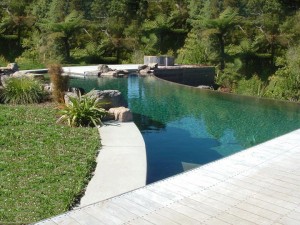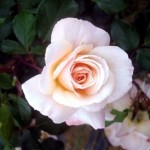THE ROLE OF PLANTS IN THE LANDSCAPE
AESTHETICS
Most landscape designers would agree plants play a significant role in the overall aesthetic of the garden. The palette of plants chosen and displayed help create a sense of place They evoke feelings, capture a mood, as well as beautifying and enhancing the outdoors In the residential landscape design process the selection of plants chosen is defined by the needs and goals of the home owner, as well as the surrounding site conditions.

Many magazines and garden television shows promote the new garden trends and tend to drive latest look or display the newest plant varieties instead of ‘planting the right plant in the right place.’ This is a simple yet powerful concept; Plant flowers, shrubs and trees matched to the growing conditions in your garden, for example, if you’re in an area that receives little or low rainfall, use plants that thrive on little moisture. Have a look around at what will flourish naturally in your area. This will mean less work, with more successful results.
The garden is an ever-changing space. Through the seasons the look and feel of a garden takes on a new perspective as plants grow and go through their natural cycles. As designers, we subtly manipulate the space to provide year round interest with an added bit of drama to draw you outside in any season.
Plants have design qualities such as colour, form and texture. We seek to bring out the best in them, showcase them and transform them so they become a piece of living sculpture . The quirky, eye catching corkscrew form of Juniperus chinesis ‘Kaizuka’ when planted alongside a tall concrete wall or building creates a dramatic statement. Plants with interesting texture when placed against a plain wall will create an interesting shadow or pattern. Arranged in combinations that contrast in texture or colour, they take on a new quality, not other wise seen when left to stand-alone, such as; Chionochloa flavicans, a beautiful native grass with weeping green leaves looks fantastic when combined with bold foliage plants such as Astelias. Or Cordyline ‘Red fountain’ with its rich wine coloured foliage planted along side the blue/grey tones of Echeveria elegans or Festuca coxii makes for a wonderful colour combination. One of my all time favourite plants for dramatic form is Lobelia aberdarica. When planted in large groups and accompanied with plum coloured foliage plants such as Lorpetalum chinense ‘China Pink’ you can achieve a fantastic combination for year round good looks.
Tips and tricks
Groups of plants with bold, large foliage such as the stunning Ligularia reniformis when planted in a small space can give the appearance of the space being larger. Large specimen trees , usually of one species planted at regular spacings on both sides of a path or road create a formal avenue signifying a. grand approach to place or building eg. Alnus jouralensis or Magnolia grandiflora. A little trick or device to fool the eye into creating a sense of perspective is to plant taller specimens towards the front, with the height of plants getting smaller the further back into the garden space.
The dominant value of plants in the garden or landscape may well be aesthetic, however they do offer other important uses as well.
FUNCTIONALITY
Plants can perform other functions in the landscape as well as beautifying. Groups of plants may be used architecturally to form walls for a sense of enclosure, define boundaries and create canopies for other plants. A hedge is soft and a very valuable way of dividing up internal spaces within a garden. Screening for privacy is an important issue for a lot of homeowners, especially in smaller urban properties. A stand of trees or shrubs can filter or block views. A single tree can provide much needed shade to screen the hot summer sun while allowing sunlight to filter through bare branches in winter for a type of climate control e.g. Albizzia julbrissin. A tall, thick row of shrubs bordering a road can reduce noise, block out or diffuse street lights or glare from car lights at night.
Mature trees can remove and trap pollutants from the air as well as improving air quality when planted in urban areas.
Permaculture
Gardens based around permaculture design plant trees that have multiple roles in the garden. Shelterbelts are planted as an internal wind/sound screen. They also are used for shelter for animals, firewood, wood carving and food production. Herb hedges attract predator insects and deter unwelcome pests. Companion planting e.g. tomatoes gown with basil deter and confuse pests and aid growth. Plants play a vital functional role, in the garden their primary use is to grow and provide your own organic food. Herbs are grown for medicinal purposes to keep you and the animals healthy. Plants are also used to repel pests in the garden. Here are a couple of recipes for organic sprays using plant material;Garlic: Use for ants, spiders, white fly, Beetles, leaf hoppers, scale, citrus bugs (stink bugs), caterpillars, aphids, cabbage and tomato worms 4 cloves of crushed garlic 1 litre water. Leave garlic to seep in water for several days before using.
Elderleaf: Use for fungal infections. Boil the leaves in water for 20 minutes. Dilute solution to a pale yellow before use.
Nettle tea: Use for white fly, aphids, leaf hoppers. Cut top of plants. Put leaves and stems in a pot with enough water to cover and bring to the boil. Boil for 10 minutes. Cool, strain. Dilute to the colour of weak tea before using.
Pyrethrum: Use for general insecticide for white fly, scale, thrips, leaf hoppers, caterpillars, beetles. Dry Feverfew or Pyrethrum flowers. Pour boiling water over flowers and cover. Leave to seep and cool. The spray should be pale in colour.
Recommended books to read:
The New Zealand Organic Gardening Book. By Brenda Little
Companion planting in New Zealand. By Brenda Little
Wetlands
A wetland, when designed properly offers many important functions within the landscape. Where an area is regularly or seasonally saturated by surface water or groundwater a wetland design can be a great solution. Farmers and landowners can create, restore and manage existing wetlands complete with ponds, birdlife and beautiful native plantings adding to the biodiversity of the surrounding environment.
ENGINEERING
Outside of your average urban garden, vegetation plays an important role in controlling erosion. These principals can be applied in your own garden where you may have some problems on your property, for example an exposed sloping bank, or an exposed piece of farmland. The canopy, stem and roots of plants interact with the erosion processes of soil. The canopy of trees changes the raindrop size as it falls through the tree before reaching the ground. It therefore reduces the amount of rain dispersed over the soil. Plant stems disrupt overland flow paths, creating a roughness to the flow reducing velocity of water flow. Plant roots promote infiltration, reducing the incidence of overland flow.
There is a multitude of important roles plants play. They are highly valued not only for their looks but for the many diverse functions that they can offer within the landscape.




enjoyed looking through your site. informative and it keeps your interest. well done…..